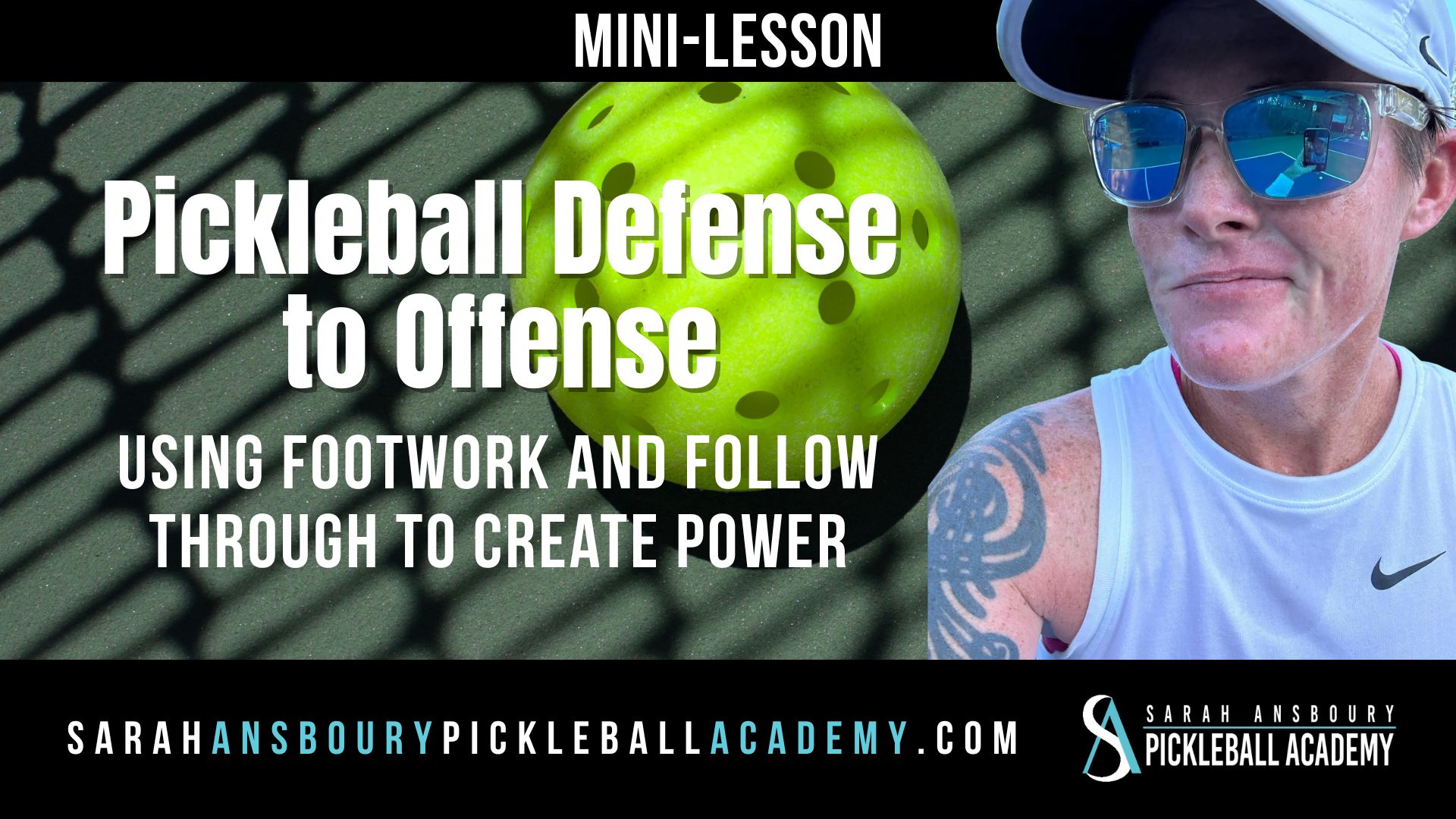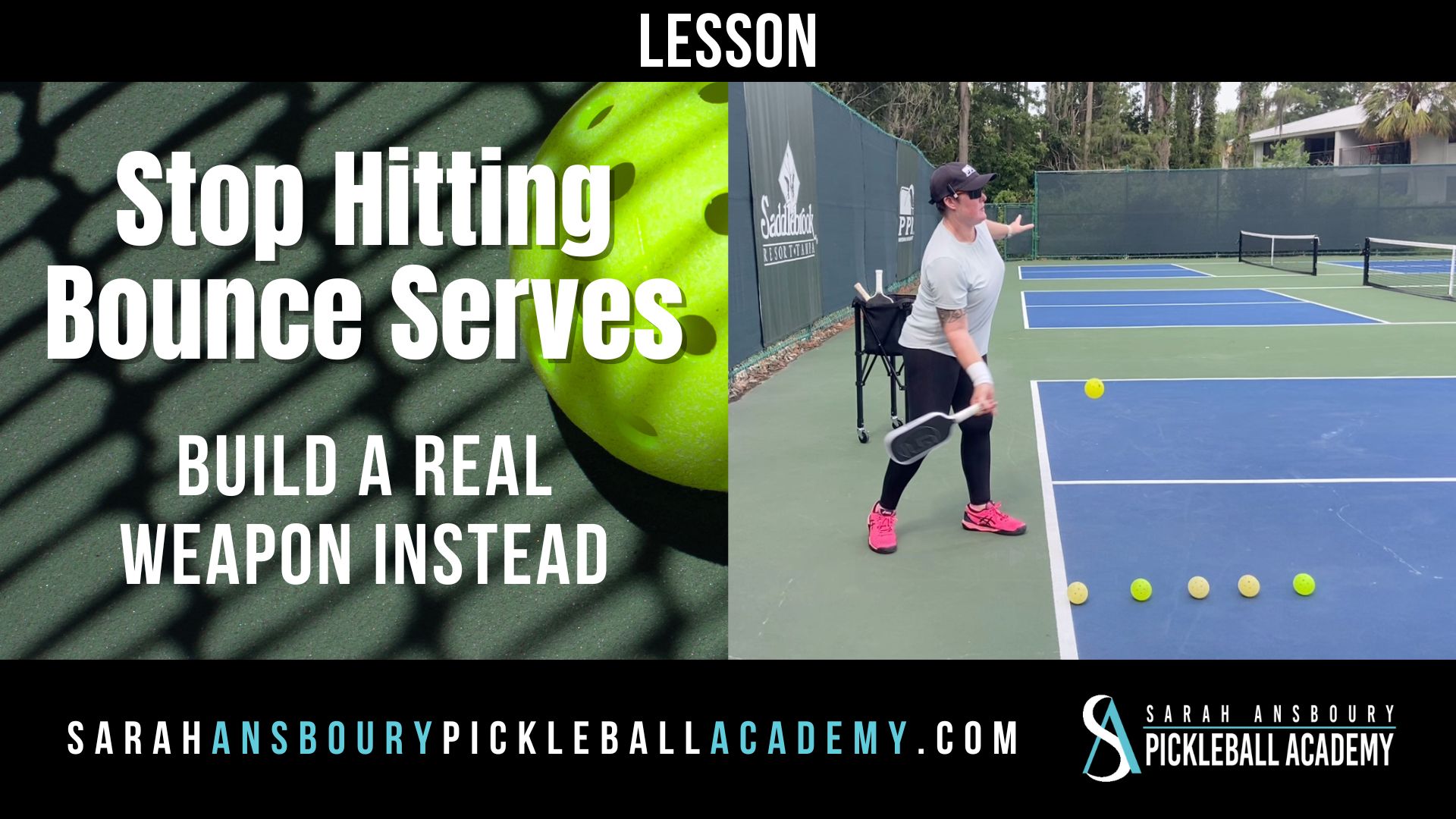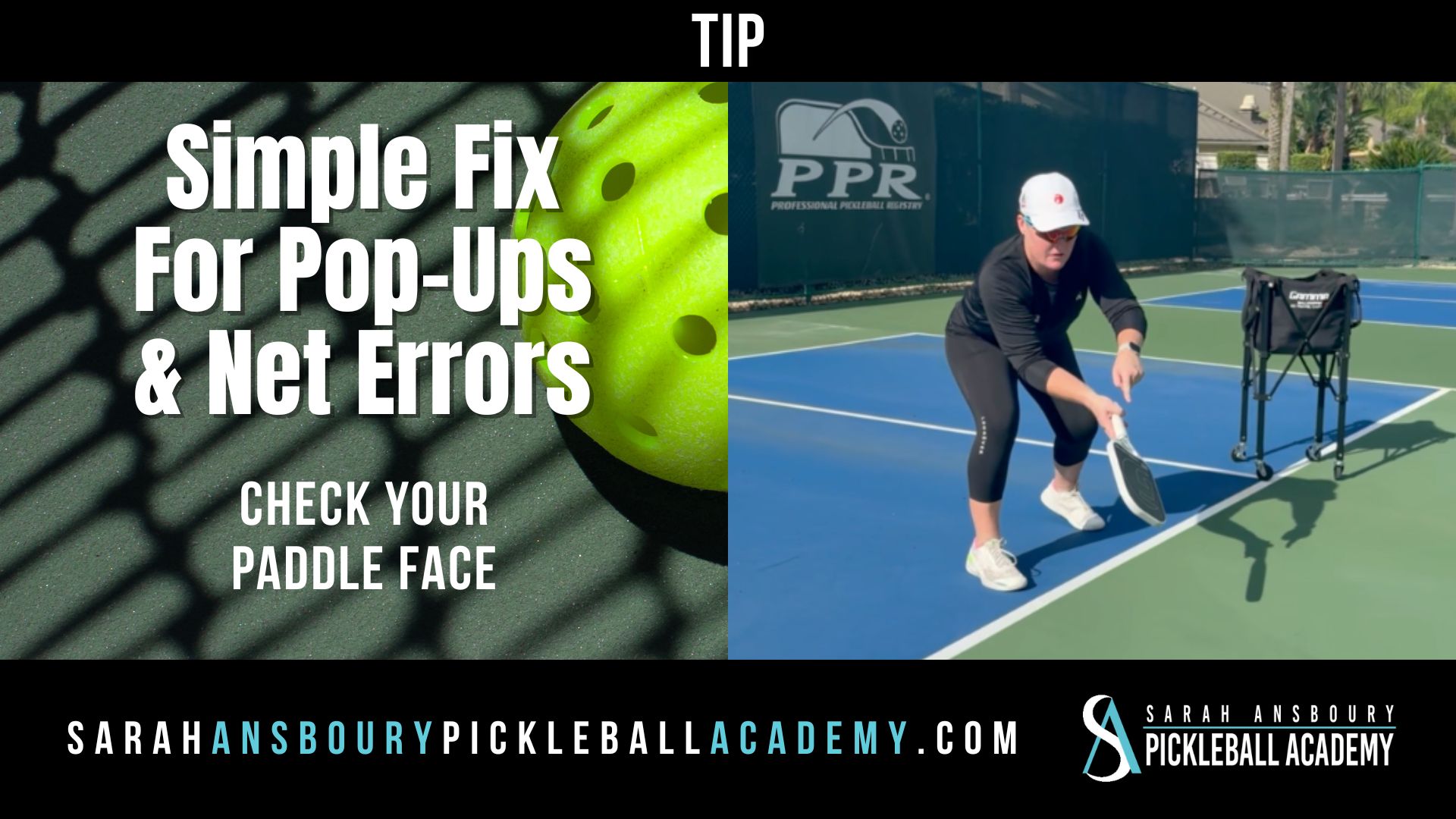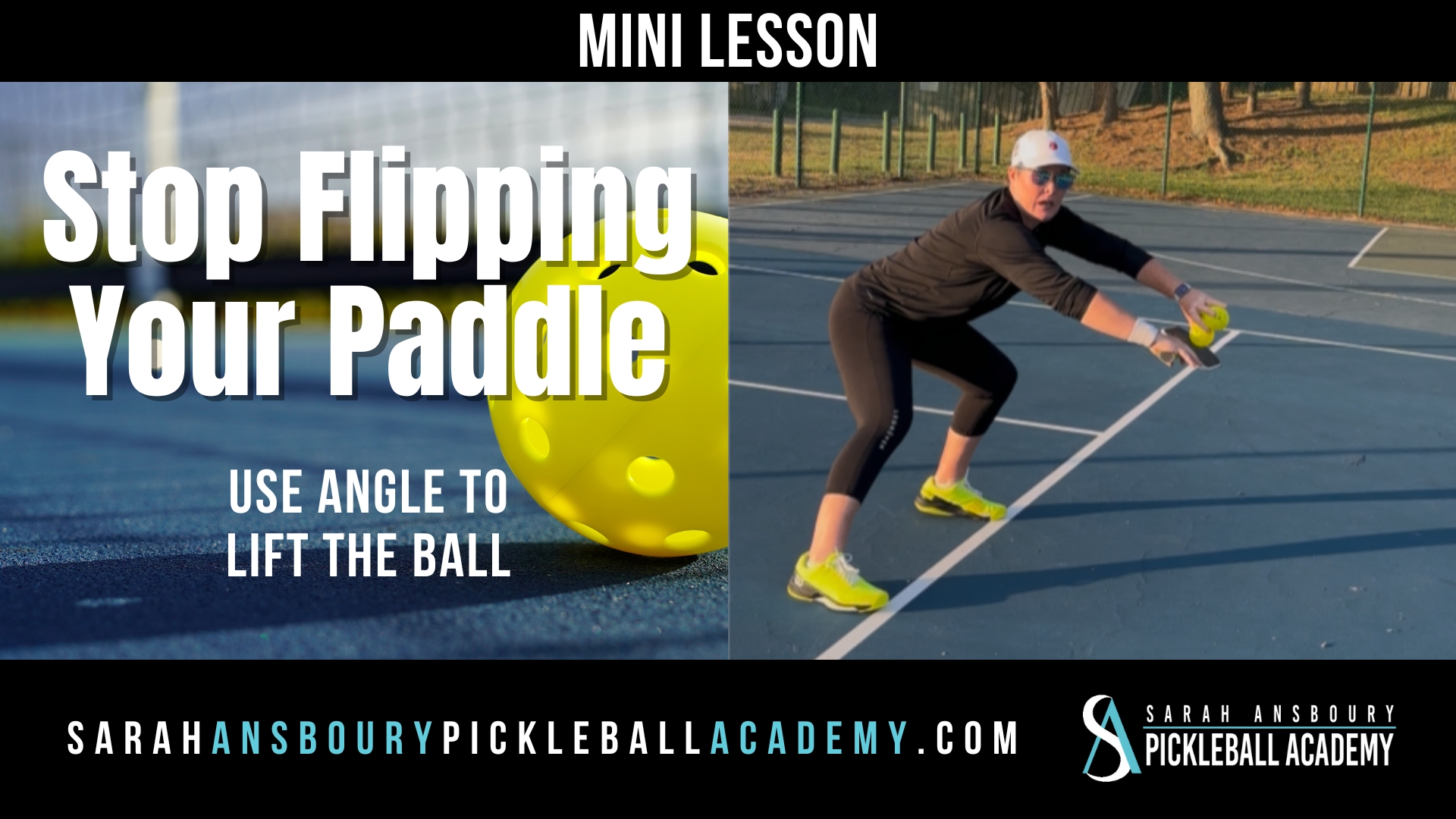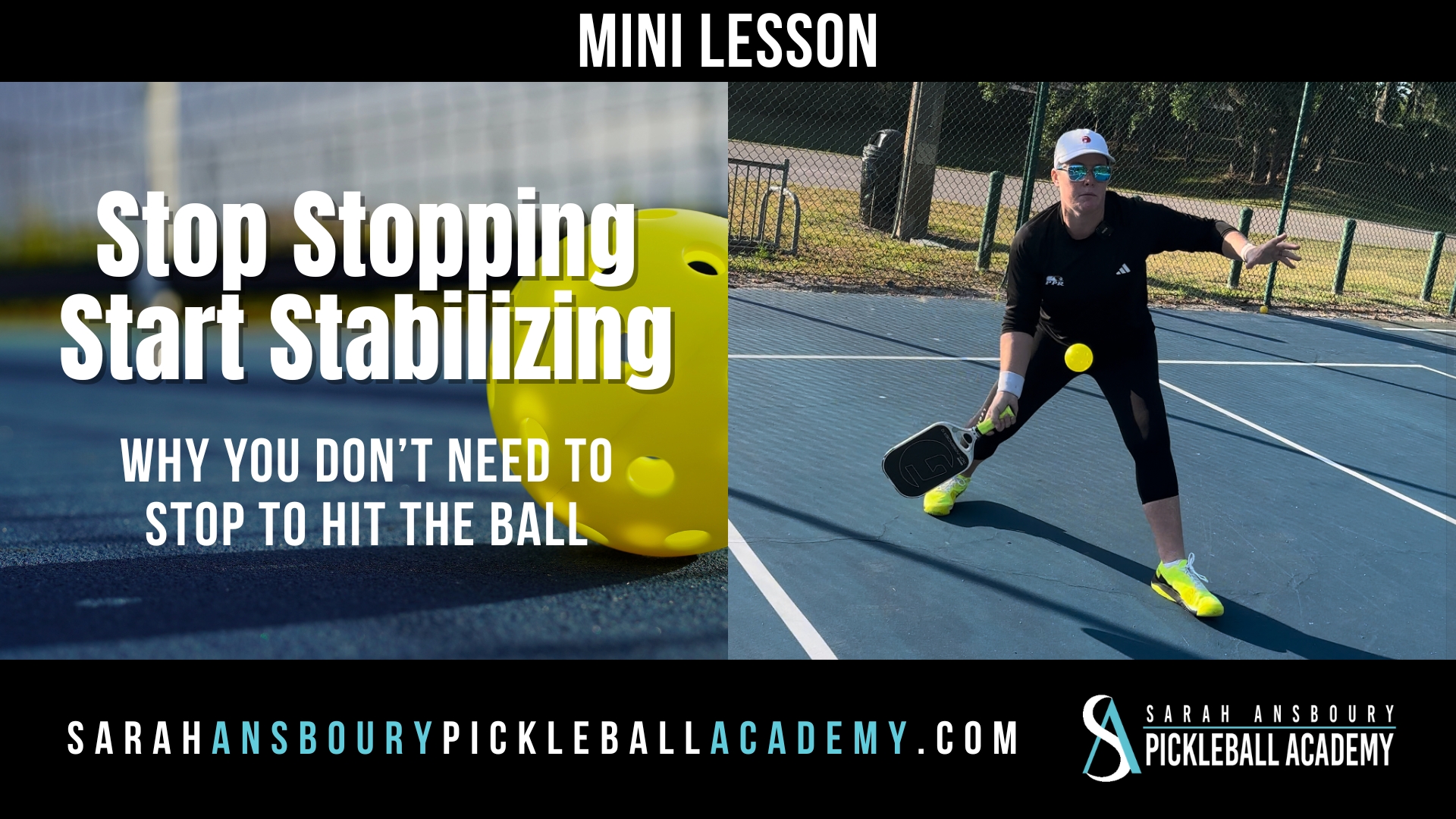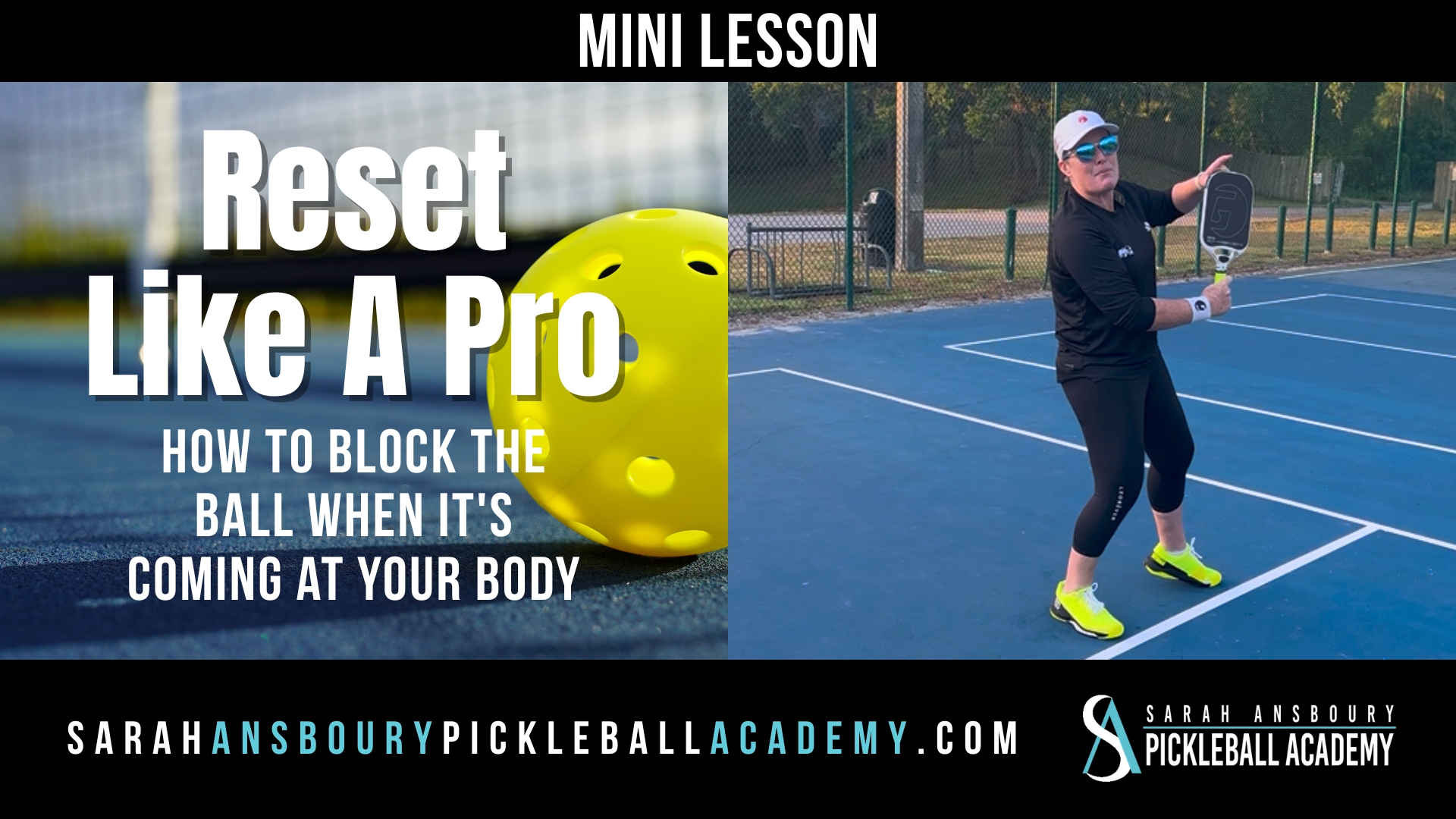From time to time a reader laments the lack of pickleball court time available to practice, or the fact that they don’t have a practice partner. Today I’ll review how you can practice pickleball alone by working on your footwork.
As you will see on this page there are many things we can focus on and improve when we are practicing alone. Footwork is a big one, and in this weeks video I focus on a drill I really like to improve our FLUIDITY! Moving and having control of our shots is essential and can be improved through practice even if you don’t have a practice partner. Check it out…
Practicing Pickleball Footwork
I can often guess a player’s skill rating within a minute or two of watching their movement on the court. Balance and being in position are key to hitting the ball consistently. And these things are made possible by good footwork. The great news is you don’t need a partner to practice footwork:
- Split Step: At the 7-minute mark of the video below I review the importance of the split step and how to do it properly. If you didn’t grow up playing a racket sport this may not be second nature to you, but that doesn’t mean you can’t learn how to do it. Simply take a few quick steps forward and then a short hop, landing with your feet slightly wider than shoulder-width apart. Don’t expect to do it perfectly the first time, just keep practicing. Remember you can practice your split step ANYWHERE.
- Lateral Movement: When we are playing at the non-volley zone we are required to move laterally along the line. Practice making lots of small, quick steps as I demonstrate in this video. Though I am dinking in the video below, I could practice this movement alone. Notice how I move quickly and then stop before I make contact with the ball.
- Retrieve a Lob: You can practice retrieving a lob in your driveway, on an empty court or in a playground. From your neutral position, on the balls of your feet, I want you to toss a ball in the air behind you. Practice pushing off of the leg opposite the direction of the ball and turning to the side as I demonstrate at the 8-minute mark in this video. Note, I don’t slide back but rather I pick up my feet as I retreat. How many times can you catch the ball before it bounces twice?
Practicing Pickleball Serving Alone
You can read my post about practicing serving alone, here.
Strength and Conditioning
Of course, all of the footwork exercises above will be easier if you have strong legs. I’ve reviewed some of the exercises seniors can do to improve leg strength here. Frankly, I do exactly the same exercises but add weight by holding barbells in each hand.
The important thing to remember is you can work to improve your game, even if you don’t have a court or practice partner. You can work on your mind, your footwork and your conditioning. You can practice pickleball alone!

